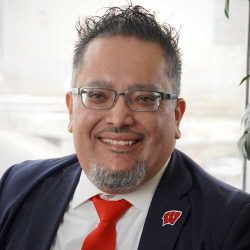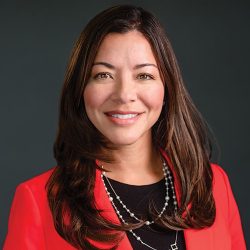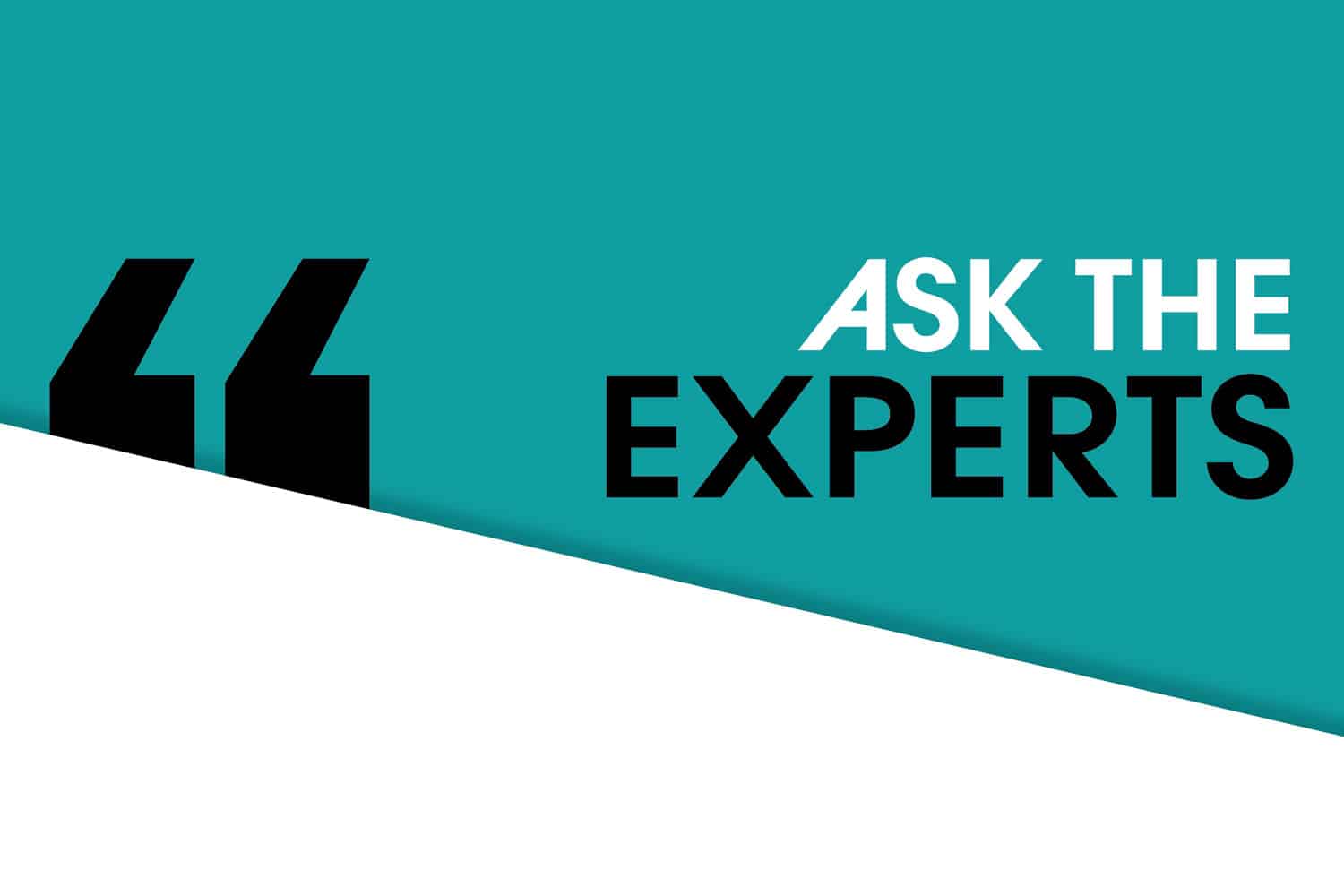
Transportation Equity
Transportation Equity aims to ensure that all community members’ needs
Share:
Share:
Home » August 2023 » Ask the Experts

“
When your organization is evaluating the impacts of a change to a program, the equity in its availability or coverage, or its effectiveness you need to include all potential customers. One way to aid in the analysis is to include those underserved and underrepresented communities as distinct subsets.”

“
Our university is spread over three campuses. Our Parking and Transportation Services Department is in the process of implementing another transit stop along our fixed route between our two main campuses to help service the student population along that line. In addition, we offer a shuttle service from one of our campuses to our downtown campus. Parking downtown comes with a high price tag and our shuttle provides a no-cost option for our faculty/staff and students.”

“
As consultants, we strive to positively impact mobility and access. By partnering with communities, we proactively acknowledge and navigate the unbalanced distribution of accessibility by diversifying permit options to support alternative modes of transportation, offering discounted permits for low-income earners, and enhancing the mobility framework of communities to minimize barriers to equitable access for all.”

“
Parking organizations can take the lead to help support economically impacted populations by providing free-of-charge or low-cost micro-mobility options that reduce the cost of transportation, foster connectivity, and close the first- and last-mile gaps. The overarching goal is to support various transportation initiatives that foster accessible, sustainable, reliable, and equitable services for all. Building and buttressing relationships with municipal, county, state, and federal partners help strengthen economic opportunities for the betterment of the community.”

“
Partnerships between local governments, transportation agencies, local businesses, and transportation management organizations to bridge transportation gaps in underserved communities are a great way to make an impact and create more inclusive transportation networks. For example, regional efforts like this in Colorado offer demand-responsive transit and electric bike rebate programs to incentivize alternate transportation modes and change how people move around our cities.”

“
Communities across the country are wrestling with challenges in creating a transportation system to better address equity challenges and connect residents and employees to transportation. We all need to live somewhere, and we all need to get somewhere. I think our industry is piloting low and no-cost transportation programs and services that are essential to longer-term equitable mobility solutions.”

“
The parking and mobility industry has prioritized public outreach efforts and the importance of data for some time now. These efforts have put our industry at the forefront of impacting transportation equity. Expanding transportation beyond the vehicle, analyzing equity trends, and being in tune with all users allows us to better bridge gaps in connectivity and equity.”

“
The parking and mobility industry continues to advance creative opportunities, services, and smart technology to offer the broadest possible selection of transportation solutions to reach as many diverse individuals and communities as possible. Equity is advancing at all levels from affordable access to car/vehicle share services in economic opportunity zones to thoughtful road space and curb lane allocation for new and evolving modes, services, and vehicle types.”

“
Increasing connectivity between different modes of transportation is a key to equitable service distribution. While we look to make sure all parkers have space, we also demonstrate the importance of safety when transitioning to transit. Once we park, exit our car, and begin our path to the elevator, we become the pedestrians that need the emphasis on safety.”

“
Our industry proactively implements initiatives and solutions to address transportation equity through shared mobility services, transit integration, accessibility standards, data analysis and planning, community engagement, and more. Smart parking solutions offering real-time parking availability information, mobile payment options, accessible parking availability, and more will continue to profoundly impact parking access for all individuals. Digital signage helps the entire community (not just those with smartphones) find the best transit option for them.”

“
The parking and mobility industry can impact transportation equity through online sales and dynamic pricing, improving parking availability and efficiency. Research studies performed by municipalities identify and address the transportation needs of all their residents. Finally, providing accessible, affordable, and subsidized parking options can improve equity in areas where public transportation is not readily available.”

“
We are addressing transportation infrastructure gaps mainly due to long-term underinvestment. Programmatic decisions should support providing sustainable, affordable, safe, reliable, and equitable transportation programs for the betterment of our communities.”

“
The biggest impact is the attention to movement and not to the cessation of it. The parking space is no longer the destination. The path of travel to the activity or service that a person needs is the destination. By changing the destination, we change the conversation to include different modes of travel, and the person becomes the center of attention.”
HAVE A QUESTION? Send it to editor@parking-mobility.org and watch this space for answers from the experts.
The opinions and thoughts expressed by the contributors do not necessarily reflect the opinions and viewpoints of the International Parking & Mobility Institute or official policies of IPMI.
This article has been written and/or compiled by the staff of Parking & Mobility magazine.

Transportation Equity aims to ensure that all community members’ needs


Transportation equity requires understanding the needs of every person potentially
Parking & Mobility is IPMI’s flagship publication, covering the news, trends, analysis, technologies, and people of the parking and mobility industry, and how it affects and influences communities around the world.
| Cookie | Duration | Description |
|---|---|---|
| cookielawinfo-checkbox-advertisement | 1 year | Set by the GDPR Cookie Consent plugin, this cookie is used to record the user consent for the cookies in the "Advertisement" category . |
| cookielawinfo-checkbox-analytics | 11 months | This cookie is set by GDPR Cookie Consent plugin. The cookie is used to store the user consent for the cookies in the category "Analytics". |
| cookielawinfo-checkbox-functional | 11 months | The cookie is set by GDPR cookie consent to record the user consent for the cookies in the category "Functional". |
| cookielawinfo-checkbox-necessary | 11 months | This cookie is set by GDPR Cookie Consent plugin. The cookies is used to store the user consent for the cookies in the category "Necessary". |
| cookielawinfo-checkbox-others | 11 months | This cookie is set by GDPR Cookie Consent plugin. The cookie is used to store the user consent for the cookies in the category "Other. |
| cookielawinfo-checkbox-performance | 11 months | This cookie is set by GDPR Cookie Consent plugin. The cookie is used to store the user consent for the cookies in the category "Performance". |
| CookieLawInfoConsent | 1 year | Records the default button state of the corresponding category & the status of CCPA. It works only in coordination with the primary cookie. |
| elementor | never | This cookie is used by the website's WordPress theme. It allows the website owner to implement or change the website's content in real-time. |
| viewed_cookie_policy | 11 months | The cookie is set by the GDPR Cookie Consent plugin and is used to store whether or not user has consented to the use of cookies. It does not store any personal data. |
| Cookie | Duration | Description |
|---|---|---|
| _ga | 2 years | The _ga cookie, installed by Google Analytics, calculates visitor, session and campaign data and also keeps track of site usage for the site's analytics report. The cookie stores information anonymously and assigns a randomly generated number to recognize unique visitors. |
| _ga_02PMHW8YWC | 2 years | This cookie is installed by Google Analytics. |
| _ga_LC0QJJHM3J | 2 years | This cookie is installed by Google Analytics. |
| _ga_V9KYTSBYT2 | 2 years | This cookie is installed by Google Analytics. |
| iutk | 5 months 27 days | This cookie is used by Issuu analytic system to gather information regarding visitor activity on Issuu products. |
| Cookie | Duration | Description |
|---|---|---|
| mc | 1 year 1 month | Quantserve sets the mc cookie to anonymously track user behaviour on the website. |
| Cookie | Duration | Description |
|---|---|---|
| ultp_view_1052 | 1 day | No description |
| ultp_view_1058 | 1 day | No description |
| ultp_view_1060 | 1 day | No description |
| ultp_view_1064 | 1 day | No description |
| ultp_view_1068 | 1 day | No description |
| ultp_view_1070 | 1 day | No description |
| ultp_view_1072 | 1 day | No description |
| ultp_view_1078 | 1 day | No description |
| ultp_view_1082 | 1 day | No description |
| ultp_view_1088 | 1 day | No description |
| ultp_view_1100 | 1 day | No description |
| ultp_view_1103 | 1 day | No description |
| ultp_view_1114 | 1 day | No description |
| ultp_view_1118 | 1 day | No description |
| ultp_view_1122 | 1 day | No description |
| ultp_view_1125 | 1 day | No description |
| ultp_view_1130 | 1 day | No description |
| ultp_view_1132 | 1 day | No description |
| ultp_view_1135 | 1 day | No description |
| ultp_view_1541 | 1 day | No description |
| ultp_view_1554 | 1 day | No description |
| ultp_view_1557 | 1 day | No description |
| ultp_view_1560 | 1 day | No description |
| ultp_view_1563 | 1 day | No description |
| ultp_view_1568 | 1 day | No description |
| ultp_view_1572 | 1 day | No description |
| ultp_view_1576 | 1 day | No description |
| ultp_view_1580 | 1 day | No description |
| ultp_view_2305 | 1 day | No description |
| ultp_view_2321 | 1 day | No description |
| ultp_view_2338 | 1 day | No description |
| ultp_view_2342 | 1 day | No description |
| ultp_view_259 | 1 day | No description |
| ultp_view_270 | 1 day | No description |
| ultp_view_275 | 1 day | No description |
| ultp_view_286 | 1 day | No description |
| ultp_view_3074 | 1 day | No description |
| ultp_view_3115 | 1 day | No description |
| ultp_view_3334 | 1 day | No description |
| ultp_view_3336 | 1 day | No description |
| ultp_view_3338 | 1 day | No description |
| ultp_view_3340 | 1 day | No description |
| ultp_view_3346 | 1 day | No description |
| ultp_view_3354 | 1 day | No description |
| ultp_view_3361 | 1 day | No description |
| ultp_view_3367 | 1 day | No description |
| ultp_view_365 | 1 day | No description |
| ultp_view_367 | 1 day | No description |
| ultp_view_38 | 1 day | No description |
| ultp_view_3846 | 1 day | No description |